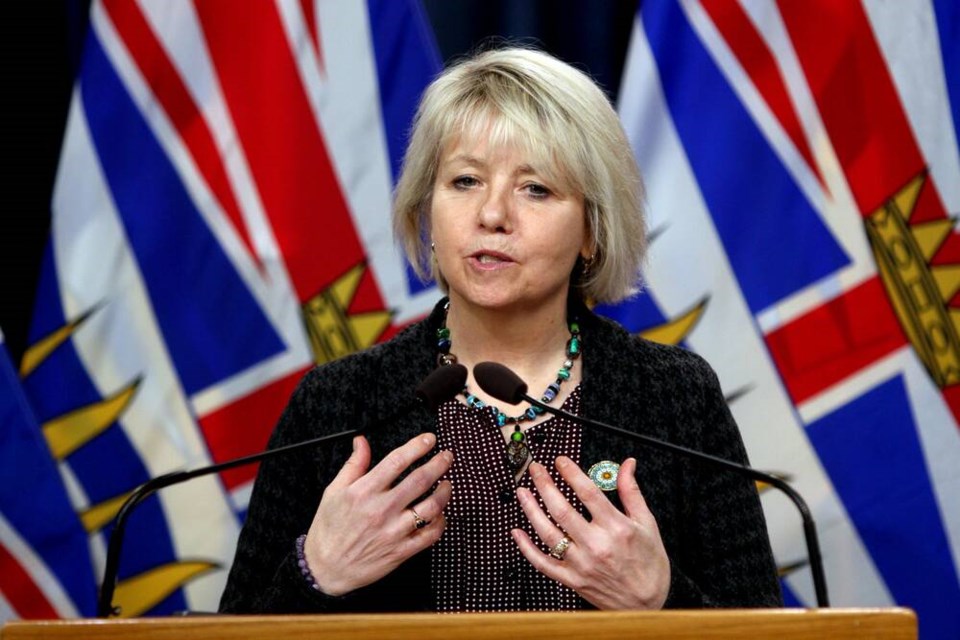The B.C. public could be entering the sixth wave of the pandemic in an information vacuum, say critics who decry the province’s decision to report COVID-19 data weekly instead of daily.
That reporting lag, along with a lack of contact tracing and PCR testing, will leave British Columbians in the dark and make it difficult for people to assess the rate at which the virus is transmitting in their community, said Andrew Longhurst, a health policy researcher and PhD candidate at Simon Fraser University.
On April 7, the province began releasing COVID data weekly instead of daily. The Health Ministry said the weekly reports will focus on key measures of severity and trends over time, similar to how other communicable diseases are reported.
The B.C. Centre for Disease Control’s COVID dashboard also updates every Thursday, reporting the number of people in hospital and intensive care from the previous Sunday to Saturday. For example, there were 233 hospital admissions between April 3 and 9, a slight increase from 230 hospital admissions between March 27 and April 2, according to the BCCDC weekly report released April 14.
Longhurst is concerned that the public has far less information now than during the fifth wave of the pandemic late last year when the highly transmissible Omicron variant surged across B.C., crippling the province’s PCR testing capacity and marking a shift to self-diagnosis through rapid tests.
Canada’s chief public health officer, Theresa Tam, said last week that the country is in the midst of a sixth wave with hospitalizations on an upward trajectory.
“During the sixth wave, it’s very hard to know how long this wave is going to last and when it’s going to peak,” Longhurst said. The data gap, he said, “sends the signal that the pandemic is over and people think that there’s no risk.”
“Right now we’re going into the sixth wave with virtually no public health mitigation,” Longhurst said, noting that the province has lifted its indoor mask mandate and vaccine passport requirements. If the province is downloading the public health responsibility onto individuals, Longhurst said, people deserve the most up-to-date COVID data to assess the risk in their community.
Longhurst is also concerned that this approach downplays the prevalence and risk of long-COVID, which has left many with debilitating, continuing medical issues.
Health Minister Adrian Dix wasn’t available for an interview Monday. He told CBC Early Edition Monday morning the data posted on the BCCDC’s weekly COVID report, updated on Thursday, includes hospitalization and intensive care unit data, regional data trends and wastewater surveillance.
Dr. Bonnie Henry, B.C.’s provincial health officer, has insisted the province has robust surveillance systems in place that allow policy-makers to see trends and make decisions about how to respond to the pandemic.
Jens von Bergmann, a data scientist and member of B.C.’s independent COVID-19 modelling group — that includes experts in epidemiology, mathematics and data analysis — said the BCCDC data is more than a week old, which makes it difficult for people to manage their risk of contracting COVID, particularly concerning for those who are immune-compromised.
Von Bergmann said it’s important to understand how the virus is transmitting on a community level, which shapes people’s behaviour and perception of risk.
“There seems to be a clear desire to move away from a daily [reporting],” he said. “I find it extremely frustrating.”
The province stopped contact tracing last year and now uses wastewater surveillance to measure the rate of community transmission. However, COVID-related wastewater testing is only carried out at five Metro Vancouver sites.
The Health Ministry said in a statement Monday that those sites cover 50 per cent of B.C.’s population and had the highest rates of COVID activity for most of the pandemic, making them a good indicator of what is happening across the province.
“We recognize the value of having a broader geographic representation and are planning on the expansion of the program but that still requires approval,” said an unattributed statement from the ministry.
B.C. no longer tests suspected COVID cases unless a person is likely to suffer severe illness, and no longer plans to collect data from the vast majority who use rapid tests.
B.C. also changed how it reports deaths from the novel coronavirus. All deaths within 30 days of a positive COVID test will be counted regardless of whether the virus was confirmed as an underlying cause of death.
Dr. Brian Conway, medical director of the Vancouver Infectious Diseases Centre, acknowledged that the hospitalization data tells us how the virus was spreading a few weeks ago and said the death data is likely an overestimate that paints a worst-case scenario.
B.C. has shifted to a pandemic management strategy where personal responsibility rather than government mandates dictates our behaviour, he said.
“So let’s not rely on public health to tell us what to do to, provide us with hard and fast rules, to provide us with statistics. They have chosen to stop doing that. It’s up to us and we need to take that seriously,” Conway said, adding that after two years, people know how to reduce the spread of the virus. “As long as we all understand, and repeat to ourselves that COVID is not gone.”
Longhurst said the province should reinstate the mask mandate in public spaces and once again collect self-reported rapid test data that would provide a more accurate picture of COVID rates across B.C.
“We need to push back against this fatalism that we’re going to live in a society of constant reinfection of COVID regardless of the disability and death that comes with it,” Longhurst said.



